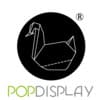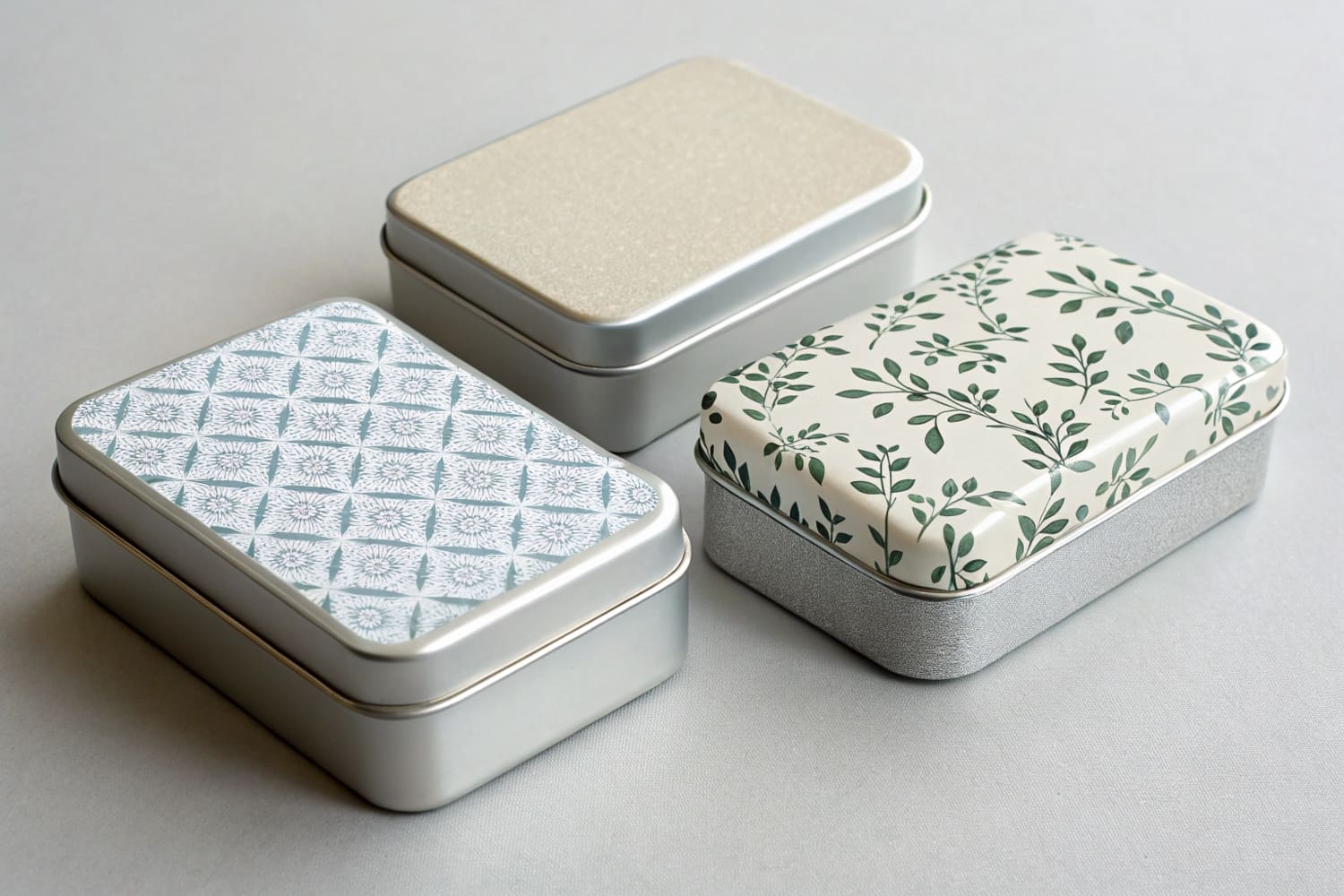I know buyers hit a wall when they ask about custom tins. The price looks good. The design looks good. The MOQ looks scary. I felt the same in my first project.
Most factories set MOQs at 3,000–5,000 pieces for new custom tin sizes, 1,000–2,000 pieces for existing molds, and 300–1,000 pieces for digital or UV prints; MOQs vary by printing method, mold status, tinplate sheet yield, and freight.
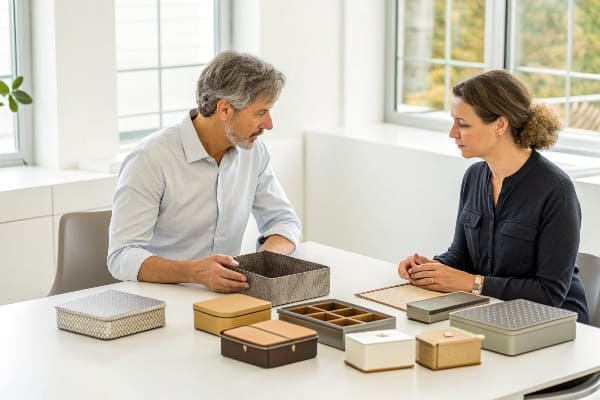
I keep this simple. I share real ranges. I explain why MOQs exist. Then I show how I lower them without hurting unit cost or timeline.
What is the minimum order quantity requirement?
Many teams ask me for 200 custom tins. They test a market. They want speed. The factory says no. The reason is not stubborn. The reason is math. Setup has a cost. Sheets have a size. Freight has a floor.
Typical MOQs are 3,000–5,000 units for new molds, 1,000–2,000 units for stock molds, and 300–1,000 units for digital-printed trials; choose the print process and mold path to match your volume and deadline.
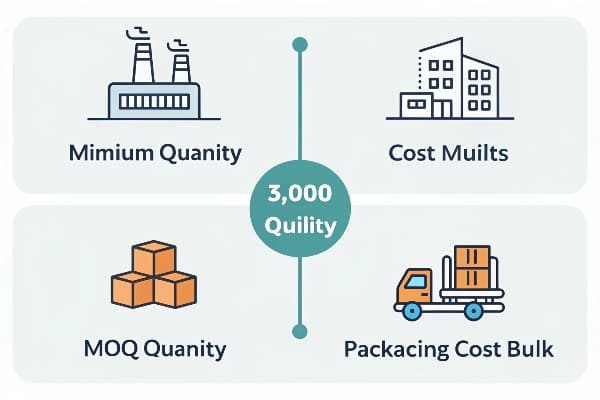
Why MOQs change and how I plan around them
(https://ordant.com/what-is-offset-printing/)[^1] uses plates. Plate making and color calibration take time. The cost spreads only when the run is big. Digital and UV skip plates. The unit cost is higher. The setup cost is low. So I use digital for pilot runs and influencer kits. I use litho for scale. I also check mold status. A new height or corner radius means new tooling. Tooling adds four to six weeks and pushes MOQ up. If I use an existing mold, I cut both time and volume. I keep dielines tight to the tinplate sheet. This improves sheet yield. The factory likes that. The MOQ goes down. I combine SKUs on one print layout when art allows. I then split by lid label or belly band. This keeps per-SKU volume low while the total run stays high. I book freight as a shared container1 for pilots and a full container for scale. This keeps landed cost stable.
| Driver | Typical Impact on MOQ | My Tactic |
|---|---|---|
| Printing (Litho vs Digital) | Litho raises MOQ | Use digital for pilots, litho for scale |
| Mold (New vs Existing) | New mold raises MOQ | Pick a stock mold that fits brand |
| Sheet Yield | Low yield raises MOQ | Tight dieline and shared layouts |
| Color Count | More colors raise MOQ | Use spot + white smartly |
| Freight | LCL adds cost | Group shipments or plan FCL |
What are the uses for hinged tins?
People love the hinge. The lid stays attached. The user can open and close with one hand. Retail staff can demo fast. I saw this in a hunting gear launch. The hinge made the unboxing feel clean and secure.
Hinged tins work for mints and candies, tea and coffee samplers, balms and cosmetics, gift cards and promos, tool bits and hardware, trading cards, collector kits, and limited drops.
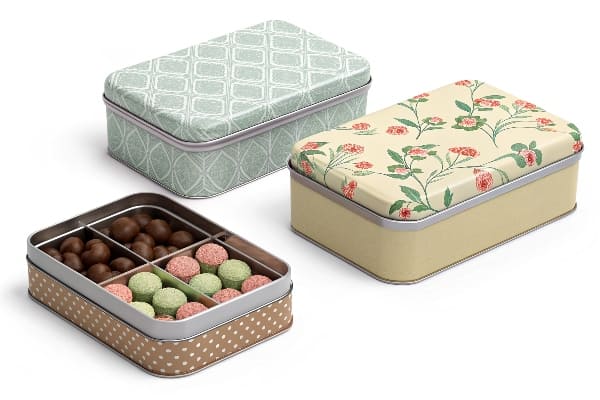
Where a hinge adds value and how I spec it
I start with user flow2. If the product is small and used often, a hinge helps. Mints, lip balm, beard balm, earbuds, and SD cards are good examples. Staff can open fast at a counter. Customers can close and pocket it. For premium tea or specialty coffee, a hinged slipcover with an inner seal keeps aroma while the lid acts as a story panel. For tools and hardware, I add foam or pulp inserts so items stay put. I spec hinge type by duty. A simple rolled hinge suits light candy tins. A piano hinge3 suits heavier contents. I pick a friction-fit or clasp based on transport tests. I add a food-safe varnish if the content is edible. I place the logo on the lid panel and a QR code inside the lid. The QR code links to setup videos or a warranty page. This supports both brand and support teams. I run drop and rub tests to check paint wear at the hinge.
| Use Case | Why a Hinge Helps | Insert/Closure Tip |
|---|---|---|
| Mints & Candy | One-hand open/close | Add food-safe epoxy and desiccant |
| Balms & Cosmetics | Daily re-use | Use PE liner or paperboard tray |
| Tea & Coffee | Aroma and ritual | Inner foil bag + hinged outer tin |
| Bits & Hardware | Organization | Die-cut foam and piano hinge |
| Collector Sets | Keep parts together | Magnet clasp and velvet tray |
What is a tin box used for?
People see tins as old-school. I see them as a strong brand tool. The surface prints rich color. The form protects fragile goods. The box lives on a desk after the product is gone. That is free media.
Tin boxes store and protect products, carry brand stories at retail, support gifting, enable reuse at home or work, and reduce plastic use with recyclable metal packaging.
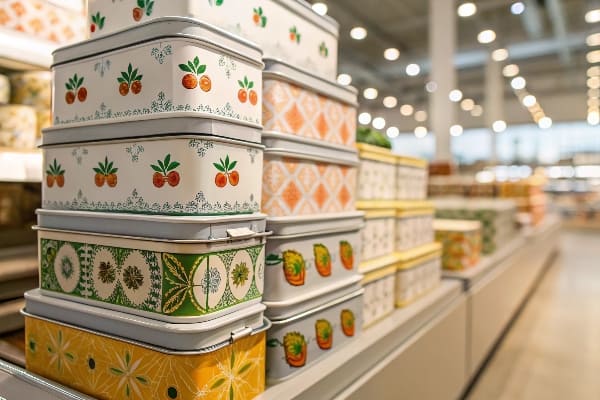
Core functions and how I align them to goals
I map each function to a metric. Protection4 ties to drop and compression tests. Branding ties to color accuracy, gloss, and emboss depth. Gifting ties to tactile cues like soft-touch varnish or debossed borders. Reuse ties to easy-open lids and a finish that resists scratches. Sustainability5 ties to tinplate recyclability and mono-material design. I also think about retail blocking. A sharp shoulder and a flat lid create a clean stack. A window adds quick product view, but it adds a plastic component unless I use PET with a peel-off design for recycling. For premium lines, I add emboss and spot UV. For value lines, I use smart two-color art and a paper belly band to change SKUs. I track repeat impressions. When a customer keeps the tin for pins or screws, the brand stays in sight for months.
| Function | Design Focus | KPI I Track |
|---|---|---|
| Protection | Material thickness, curl | Drop/stack test pass rate |
| Branding | Print, emboss, varnish | Delta-E color variance |
| Gifting | Tactile feel, closures | Unboxing NPS |
| Reuse | Hinge, durability | Keep rate after 30 days |
| Sustainability | Mono-material, recyclability | Recycled content % |
What are the three things tin is used for?
I get this question when engineers join calls. They want the simple list. I give it in plain words. It keeps the team aligned.
Tin is used for tinplate coating on steel for cans, for solder in electronics and assembly, and for copper-tin alloys like bronze in mechanical parts and art.
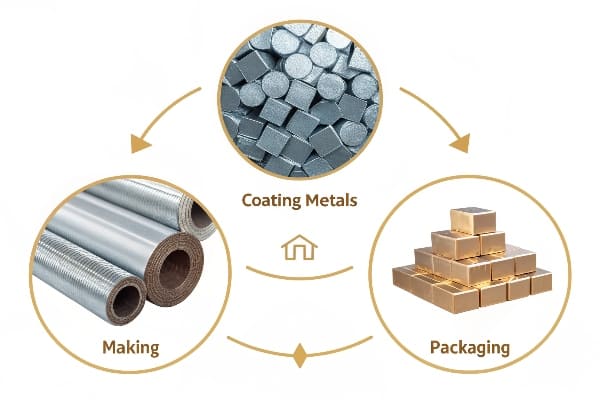
What this means for packaging and why I care
Tin itself is soft. We rarely make boxes from pure tin. We use tinplate6. Tinplate is low-carbon steel with a thin tin layer. The tin layer guards against corrosion and helps food safety when paired with the right lacquer. That is why food cans last. In electronics, tin is in lead-free solder. This matters for accessory tins that sit near devices; no direct link, but EHS teams like to see RoHS statements7 across categories. In alloys, tin makes bronze with copper. Bronze has strength and wear resistance. This is not our box material, but buyers know the word, so I clear up the difference. For my projects, I ask suppliers for tinplate grades, lacquer type, and migration test reports when the product touches food. I also ask for a recycling statement. Most markets accept tinplate in the metal stream. I design labels and windows so users can remove them. This keeps the pack as close to mono-material as possible.
| Tin Use | Simple Definition | Why It Matters to Me |
|---|---|---|
| Tinplate Coating | Tin on steel sheet | Corrosion resistance for boxes |
| Solder | Tin-based filler metal | Compliance language (RoHS) |
| Bronze Alloy | Copper + tin | Material awareness for teams |
Conclusion
Choose your print process and mold path to match your volume. Start small with digital. Scale with litho. Use hinges and inserts to add function and reuse.
Learn about the advantages of shared containers in shipping, including cost savings and efficiency. ↩
Understanding user flow is crucial for optimizing product usability and enhancing customer experience. ↩
Exploring the advantages of piano hinges can help you choose the right hardware for your projects, ensuring durability and functionality. ↩
Learn about the importance of material thickness in packaging to ensure product safety and reduce damage during transport. ↩
Explore this link to discover innovative strategies for sustainable packaging that can enhance your brand’s eco-friendliness. ↩
Understanding tinplate is crucial for packaging design, ensuring durability and food safety. ↩
Exploring RoHS statements helps ensure compliance in electronics, which is vital for product safety and market acceptance. ↩
